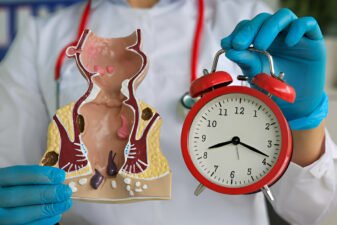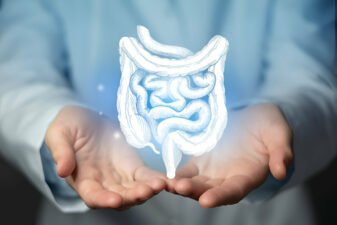Liposuction for Fat Control
Liposuction (also called lipoplasty, suction lipectomy, or “fat modeling”) is a surgical procedure designed to sculpt or contour one or more areas of the body, by removing localized deposits of fat that have not responded to diet and exercise treatment. Lipoplasty is typically performed to remove body fat from the abdomen, hips, buttocks, thighs, knees, upper arms, chin, cheeks and neck. Liposuction is frequently combined with plastic cosmetic surgery such as facelift, neck lift with platysmaplasty, abdominoplasty (tummy tuck) and lower body lift. Liposuction is the most commonly performed cosmetic surgery procedure in North America. More than 400,000 liposuctions were performed in 2005. During the past 15 years, liposuction operations have expanded to include new techniques like ultrasound-assisted lipoplasty (UAL), the tumescent technique, and the super-wet technique. These new fat-reduction procedures have enabled plastic surgeons to provide more precise fat-removal results and quicker recovery times. Health complications after lipoplasty are relatively low, the most common problems being: infection, allergic reactions to anesthesia, friction burns, damage to organs, fluid accumulation, blood clots, excessive fluid loss, and extended healing time.
Is Liposuction A Form Of Bariatric Surgery?
No. Although lipoplasty is a relatively safe operation that can have very beneficial body-sculpting results for patients, it is NOT a bariatric procedure to treat obesity – it is purely cosmetic and intended only to improve body shape. The amount of fat that can be removed is relatively small. No more than about 10 pounds of fat can safely be removed in any one operation. However, suction lipectomy is often performed on patients who have lost a significant amount of weight following gastric bypass, and are left with specific pockets of local fatty tissue. Liposuction may also be used to surgically remove ‘cellulite-affected’ fat cells.
What Happens During A Liposuction Operation?
In simple terms, a substance is pumped into the ‘fatty area’ to soften the fat cells. A tube is then introduced into the area, moved around to loosen the fat which is then sucked out of the body through the tube. More specifically, a narrow tube or “cannula” is inserted via a small incision in the skin. The cannula is then moved through the fat layer to break up the fat cells. Finally, the excess fat is suctioned out by a vacuum pump (aspirator) or syringe, according to the surgeon’s choice. The use of “micro-cannula” (very small cannula) permits very precise body contouring through much smaller incisions. If multiple sites are being treated by suction lipectomy, the surgeon will treat each area in turn. During the operation a degree of fluid is removed along with the fat, therefore fluid replacement is essential to prevent shock. Thus patients are fed intravenous fluids during and immediately after lipoplasty surgery. The procedure can be conducted under general or local (“tumescent”) anesthesia. The issue of “stitching” is handled differently by different surgeons. The problem with liposuction is that although the incisions are small, the amount of fluid that must drain out through them is relatively large. Thus, some surgeons opt to leave the incisions open, to optimize and expedite fluid drainage, while other surgeons partially stitch them, or delay stitching until most of the fluid has drained out – viz, about 1 or 2 days.
What Are The Surgical Goals Of Liposuction?
A lipoplasty plastic surgeon typically has four specific goals. (1) To remove the correct amount of fat, bearing in mind the effect on the patient’s health. (2) To minimize the effect of the cannula and aspirator suction process on neighboring tissue, such as blood vessels and connective tissue. (3) To maintain the correct fluid balance of the patient both during and after the surgery. (4) To cause the least discomfort to the patient both during and after the lipoplasty procedure.
Who is a Good Candidate for Liposuction?
The ideal candidate for lipoplasty is within the normal weight range and is physically healthy. Lipoplasty offers best results to those with good skin elasticity. Patients with certain medical problems incur a higher risk of health complications. Put another way, the best patients for liposuction have reached a healthy weight for their height, but have localized pockets of surplus fat around the hips and buttocks, thighs, inner knee, back, abdomen, upper arms, cheeks, jowls, chest area, and waist, as some fat deposits in certain areas may not respond to normal weight loss methods. Patients should be healthy and non-smokers.
Is Liposuction A Suitable Treatment For Severe Obesity?
No. Bariatric Surgery is the only recommended surgical option for morbid obesity. For more information about the different types of obesity operations, see these guides: Health Dangers of Bariatric Surgery – Health Dangers of Gastric Bypass – Does Obesity Surgery Work? – Weight Loss Surgery Results – Gastrointestinal Surgery Types – Weight Loss Surgery Risks And Benefits – Adjustable Gastric Banding (AGB) – Lap-Band Surgery – Vertical Banded Gastroplasty (VBG) – Stomach Bypass Surgery – Roux-en-Y-Gastric Bypass – Biliopancreatic Diversion Bypass (BPD) – Duodenal Switch Bypass (BPD-DS)
What Types of Liposuction Surgery are Available?
There are several methods of liposuction, typically categorized by the amount of fluid injected into the site and by the way the fatty tissue is broken down prior to being removed. In all cases, the liquefied fat is suctioned out by a vacuum pump.
Wet Liposuction
A small amount of fluid, less in volume then the amount of fat to be removed, is injected into the area. It contains: lidocaine to anesthetize the local area, epinephrine to contract the blood vessels and minimize bleeding, and a salt solution: to make it saline. This injected fluid helps to loosen the fat cells and reduce bruising. “Dry Liposuction” used to be performed, but is no longer a recommended method of suction lipectomy.
Super-Wet liposuction
During superwet lipoplasty, the amount of water injected is about the same as the volume of fat to be removed. Typically, this is the preferred technique for removing larger amounts of fat tissue, as it carries less risk of hemostasis problems and fluid overload as is seen with the tumescent method. Duration is 1-3 hours, according to the size of the treated area. It may require either, intravenous sedation as well as the local lidocaine, or a general anesthesia.
Tumescent Liposuction
During tumescent lipoplasty, a large amount of fluid is injected, as much as 3-4 times the volume of fat which is to be suctioned out. The larger quantity of fluid (containing sterile dilute salt water, adrenaline, and anesthetic liquid) helps to separate the muscle and the fatty tissue, thus creating more space for the surgeon to move the cannula to break up the fat cells. Duration of this operation is roughly 4 hours – longer than normal due to the extra fluid introduced. Because so much fluid is used in tumescent liposuction, this method is not generally used to remove large quantities of fat.
Ultrasound-assisted Liposuction (UAL)
During ultrasound-assisted lipoplasty, also called ultrasonic liposuction, a special cannula is used. This transmits ultrasound vibrations from a generator to the area of excess fat. As the tip of the cannula comes into contact with the fat cells it breaks them up and emulsifies (liquefies) the fat. The fat, now in liquefied form, can then be removed using low-pressure suction. This low pressure suction-method causes less trauma to the surrounding areas. In general, ultrasound lipoplasty reduces operation time, decreases tissue trauma, and reduces blood loss.
Power-assisted Liposuction (PAL)
During power-assisted lipoplasty a specialized cannula with mechanized movement is used, to remove the number of manual movements made by the plastic surgeon. The more controlled cannula movement involves less discomfort for the patient and a reduced risk of puncturing internal organs.
Water-assisted Liposuction (WAL)
This is a very new technique. During water-assisted lipoplasty, a thin fan-shaped water beam is used to loosen the fat tissue. The water is continually added and almost immediately aspirated (removed) through the same cannula. This liposuction technique leads to less water being present at the site and therefore less swelling. The cannula movements, helped by the water beam, are gentler.
Is Liposuction A Safe Way To Remove Unsightly Body Fat?
Yes. Lipoplasty operations, especially those involving general anesthesia, are serious procedures and so carry all the standard health risks. However, the American Society of Plastic and Reconstructive Surgeons has recognized liposuction as a safe and effective method of removing localized fat areas. But remember, liposuction is NOT an alternative to a healthy weight loss program as a means of maintaining a healthy weight. Nor is it an anti-obesity treatment such as gastric bypass or Lap-Band®.
WARNING: Liposuction Not A QUICK Solution To A Weight Problem
Liposuction is not a quick and easy answer to being overweight. It involves a serious operation and should not be undertaken without very close consultation with your doctor. After liposuction, patients must follow a healthy program of diet and exercise, otherwise fat will reappear.









